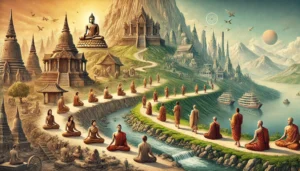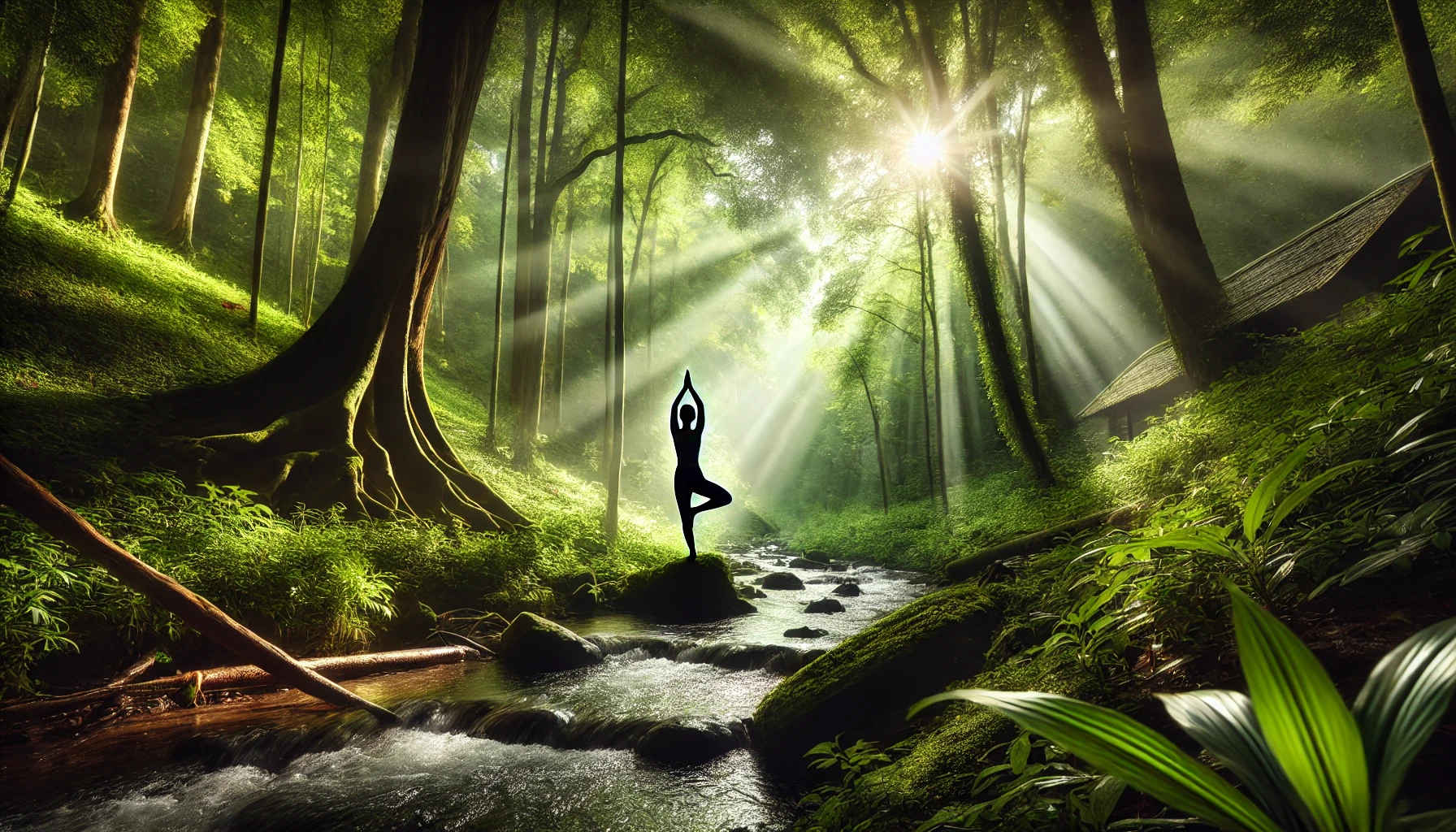What actually is meditation? Well, we googled it to find an answer, and according to Wikipedia, “Meditation is a practice in which an individual uses a technique to train attention and awareness and detach from reflexive, “discursive thinking,” achieving a mentally clear and emotionally calm and stable state, while not judging the meditation process itself.”
In simpler words, it is a set of techniques that helps one achieve a heightened state of awareness and focus, a state of calmness. The set of techniques might differ from person to person, however, their goal remains the same.
This practice of mindfulness was termed as meditation, its stem word ‘meditatum’ which means ‘to ponder.’ In this blog, we will be looking into the origin of this practice and the timeline it followed. We will also look into the importance of this practice in the present day and how meditation is helping the world now.
The Origin
Meditation has a rich and ancient history, with its origins dating back to thousands of years. Dhyaan, or meditation, is a practice believed to have originated in India centuries ago.
The earliest mention of meditation has been recorded from the wall paintings of meditative poses in India dating around 5,000 to 3,500 BCE (pre-historic times).
The oldest written reference has been recorded in the Vedas, dating back to 1,500 BCE. The Upanishads mention meditation, or Dhyaan, as a medium to achieve self-realization and spiritual enlightenment. Even the Yoga Sutras of Patanjali, written around the 2nd century BCE, provide a systematic approach to meditation.
Yoga and Meditation

Now, it is quite normal if one gets confused between yoga and meditation, however, these two terms are completely different. Both practices are deeply interconnected and complement each other in many ways. According to Maharshi Patanjali, there are Eight Limbs of Yoga, namely:
- Yama or the ethical disciplines
- Niyama or Personal observations
- Asana or the postures
- Pranayama or the breath control
- Pratyahara or the withdrawal of senses
- Dharana or concentration
- Dhyana or meditation
- And Samadhi which is the enlightenment.
The practice of meditation requires deep contemplation and awareness without distraction, which results in the achievement of the final stage of Yoga, i.e. Samadhi, unity with the divine or the true self.
The one who practices meditation is called a ‘Yogi.’
The Timeline

As mentioned earlier, meditation was first practiced in India. The first and oldest civilization in the world, the Indus Valley Civilization, has mentioned ancient Indian meditation, engravings of meditation-like poses in seals, and other artifacts. The seal of Pashupati, found in the excavation of the Indus Valley civilization, is one such. Pashupati, the god of animals, is seen sitting in a meditating posture.
The Hindu mythologies and stories are filled with Yogis, Rishis, and Sages who practiced meditation techniques in order to attain spiritual powers. Meditation has also been a crucial part of Hindu mythology, as according to various stories, a deep Tapasya or meditation was performed by any human (be it a sage, a king, a demon, or a normal human) to please the God he/she wishes to. On successful completion of their Tapasya, the summoned God used to appear and grant them their desired wishes/boons.
Meditation is also mentioned in the ancient texts of Jainism and Buddhism, as it is believed to be the method that helped the Mahavira and Gautam Buddha achieve their salvation. In Buddhism, Gautam Buddha achieved his salvation, while sitting under the Bodhi tree, meditating. The followers of Buddhism took this practice with them to different parts of South Asia, which marked the birth of Taoist meditation practice in China and Zen Buddhism in Japan.
A mystical practice in Islam called ‘Sufism’ shares similarities with meditation. Although it has a different path, which includes heart-centered practices and art, its ultimate goal is spiritual purification and unity with God.
In the modern 20th century, meditation has gained popularity worldwide due to its propagation by the Eastern spiritual teacher.
Types of Meditation in Hinduism

- Mantra Meditation: this method involves the repetition of a sacred sound or phrase, for example, the recitation of the mantra ‘om,’ to focus the mind.
- Bhakti Meditation: a devotional method that focuses on devoting oneself to the love of a deity.
- Jnana Meditation: the method involves a philosophical and intellectual approach that results in the achievement of self-realization.
- Tantrik meditation: involves ritualistic practices aimed at achieving power beyond life.
Benefits and conclusion
Meditation is seen as a method to achieve self-realization and understanding of the divinity of the universe. In modern times practicing meditation helps in achieving mental and emotional stability and inner peace. It helps to reduce stress, improve concentration, and promote overall enhancement.
If my blog about meditation interested you, I would recommend trying it too! You might try YouTube to look in for meditation videos and try them to see what works for you! Leave in the comment section what is your favorite way to meditate or relax, and I’ll see you guys in the next blog! Check out this blog: Sanskrit Origins: Tracing the Language’s Ancient Evolution and Read more about Vedas : https://itihaaskikhoj.in/mantra-power-mantras-for-spiritual-growth-and-clarity/

